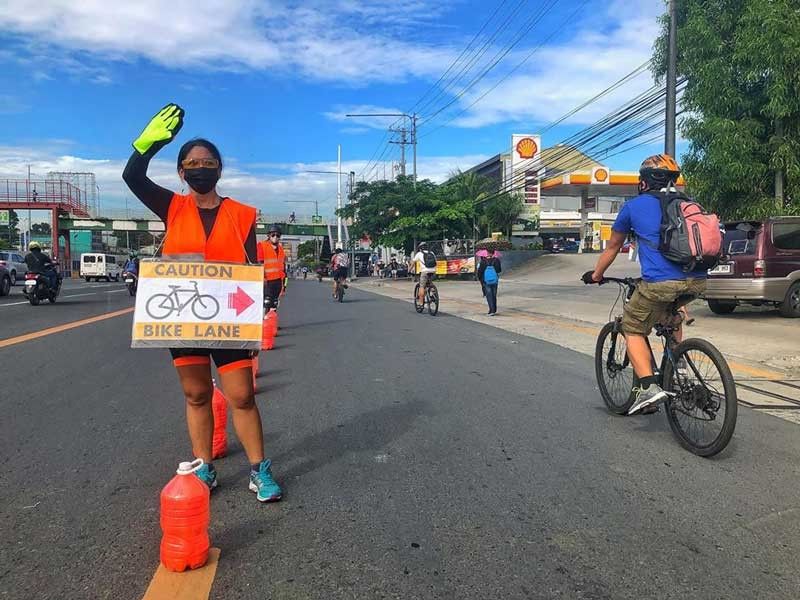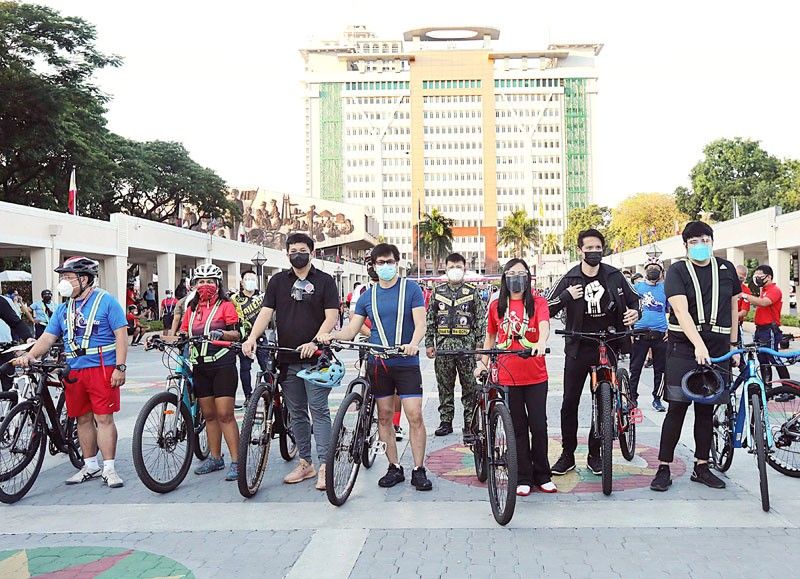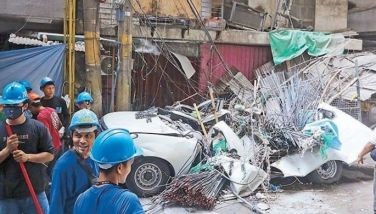The Road Ahead: For Quezon City, more cyclists will mean more bike lanes

This story is part of a series on Metro Manila's cities and how they are promoting cycling and the use of bicycle lanes
MANILA, Philippines — When the coronavirus pandemic shuttered most of public transportation in Metro Manila, thousands looked to cycling to get to work. That was in early 2020.
Against the backdrop of the coronavirus-induced quarantines, the ripple effect in the cycling community has sustained itself to this day. In 2021, the Department of Transportation oversaw the construction of 313.12 kilometers of bike lanes in Metro Manila alone.
Advocates have long called for a reimagination of how we use our roads. But what does this actually mean on the ground, and what can our individual efforts learn from each other?
Philstar.com spoke to the changemakers themselves to find out: the transportation offices leading the charge in Metro Manila’s local government units.
Here's what the city hall of Metro Manila's biggest city had to say about its bike lane network.
'Phase Two' coming soon
In an interview with Philstar.com, Quezon City Assistant Administrator for Operations Alberto Kimpo said that the push for active transport was born out of necessity as "the biking attitude improved for many."
The project began under the city's Green Transport Office which focused on the lanes as a means of environmentally-friendly transport rather than as an urban mobility option for commuters to get around the city.
At the time, they were designed to be shared spaces for leisure rather than protected bike lanes on major thoroughfares. Those served as the groundwork for the lanes we see today.
"Were they successful? I guess for some, in order to at least establish a route wherein there were special road markings on the ground. Then we had a trickle of bikers and bike communities then," Kimpo said.
Today, the city government is also slated to begin marking its phase 2 bike lanes, which is intended to link up residential areas and "other usual places of attraction."
"People were biking. We could already see them. This was an impetus for Mayor [Joy] Belmonte to say that there has to be some protection that can be afforded to the bikers," Kimpo said of the early days of the coronavirus pandemic.
"We could see them along Commonwealth Avenue...with the width of the roadway there, the speed of the vehicles there could be very dangerous for bikers."
As it stands, Kimpo said, the city has passed three ordinances requiring certain establishments to have bike racks on their properties.
"We have a sector of contractors who are willing to undertake things that they're going to be doing for the first time in their professional existence...and they were willing to learn," he said.

How were the bike lanes put up?
Working with the task force: When the city government reached out to the IATF to inform it of its plans to proceed with its phase one bike lane plans, it already included its design. That was as early as June.
But, Kimpo said, "it was only in late October or early November that the national government came out with its design guidelines" by way of Department Order No. 88 from the Department of Public Works and Highways.
"It was a bit of a challenge [because] by that time, we had already selected our contractors and we did our coordination with the national government" through the DPWH and the MMDA, Kimpo said.
The department order also posed another issue: the design basis also had different priority considerations.
According to engineer Ramir Angeles, Special Operations Officer II at the Office of the City Administrator of Quezon City, the DPWH prioritized bollards and separation devices while the city used other forms of separation such as buffers. The national roads in and around Quezon City do not have buffers.
Differences in design: Kimpo said that the design philosophy of the city's bike lanes — which included a minimum width of 1.5 meters including a 0.6-meter buffer — differed from that of the national government right off the bat during the initial meetings.
"You'll really notice where the national government's bike lanes are, and where the Quezon City bike lanes are simply because of the design bases that were utilized," he said, adding that "it wasn't too difficult to marry the two."
The city government said it had to settle for a shared outer lane simply because of the physical conditions governing the roads themselves.
For instance, the industrial and narrow Quirino Highway differs largely from wider Commonwealth Avenue. As of this writing, the bike lanes in Commonwealth don't actually reach the ones in Quirino.
"Every once in a while, we would receive complaints, we would explain to everyone that this is an effort of government without differentiating us being local and national...nothing like that," Kimpo said.
"There wasn't any conflict between us in the development of our bike lanes...Of course, given that these are all international best practices, there is really not much of a transition, they will just be noticeable."
Does the lack of connectivity pose a problem, then, for bike commuters and the city government? "Yes, and we're trying to circumvent the issue by looking for alternative routes."
One example is Aurora Boulevard where the Manila portion has bike lanes painted by the DPWH, while the QC portion has buffered lanes.
"We really just have to work with what we have and work around it for now, if [the goal is] connectivity...we will just have to study how we're going to do the actual linkages so that the bike lanes will be connected when they do have to connect already on the ground," Kimpo said.
Kimpo said that linking with other city transport offices to compare notes should happen soon as phase two nears completion.
"The lines on the roads are going to start meeting. They haven't been meeting yet as of the moment, but once they do, there has to be some transitioning that will take place in that area," he said.
He said that the city has also experienced the same problems with violations of the bike lanes. "For cyclists, there is always that fear of conflict with motorists turning ugly," he said.
Enforcers need discipline from QC's motorists: Kimpo highlighted the need for motorists to share the road with other users, noting that violations are still commonplace according to data from the city's monitoring.
"Everything has already happened on the bike lanes. There are people doing their laundry, there are extensions of karinderyas on the bike lanes," Kimpo said.
Select substations of the Quezon City Police District have also rolled out Bike Patrol Units to promote usage of the bike lanes while also enforcing rules fot their use.
Those units materialized "by virtue of the fact that their station chiefs are also avid bikers," Kimpo said. "So we're encouraging all 16 of them knowing most, if not all of these police stations, have bike lanes in their jurisdiction to really develop bike patrol units."
Kimpo said that the city has already exhausted efforts to intriduce "a visual effect for motorists to know that part is already a bike lane."
"It also has a rumble strip. Once your wheel touches it, you're automatically supposed to know that you are on a road that you're not supposed to be traveling on."
More cyclists needed to expedite development
At the end of the day, the push for active transportation needs to be a partnership between residents and the local government unit.
To recall, cyclist group Bikers United Marshalls set up an improvised bicycle lane along Commonwealth Avenue in Quezon City in June 2020 at the height of the transportation woes caused by the community quarantine.
READ: Volunteer group: Improvised bike lane was decisive action to protect commuters
The improvised bike lane they put up along Commonwealth was made with large plastic bottles. The group's volunteers also served as traffic marshalls who provided bikers, many of whom lacked protective gear, with reflectorized vests.
According to Kimpo, part of pushing for better policy and infrastructure to support bike lanes is getting more people to use the bike lanes. That will give proposals for them at City Hall more weight.
"What we really need to happen is for more and more bikers to use the bike lanes in order for the allocation of such valuable and limited space to be justified, including the expansion," he said.
"That's why we constantly encourage our residents, especially if their destination is just ten kilometers from here to there."
- Latest
- Trending































